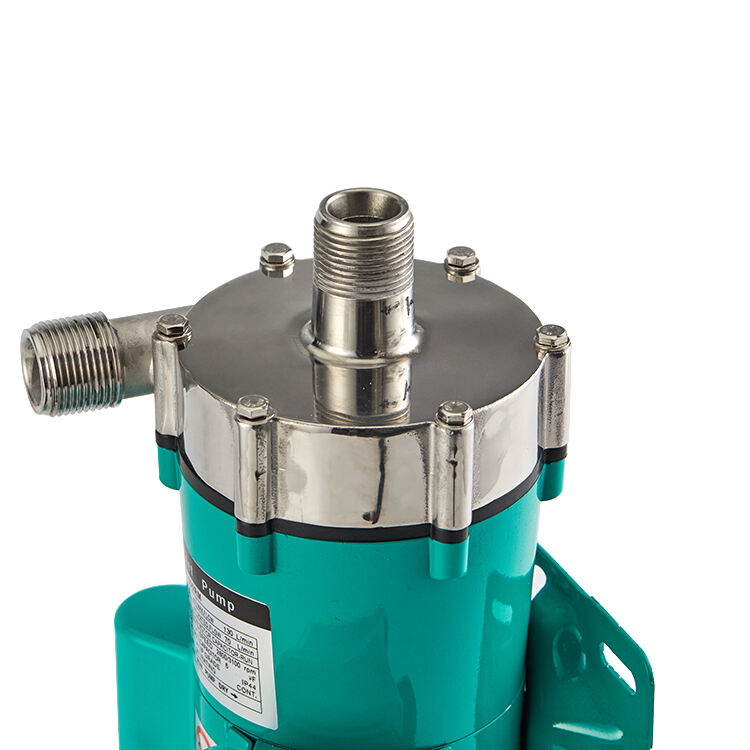Essential Guide to Modern Wort Transfer Solutions
Brewing enthusiasts understand that the quality of their final product heavily depends on the efficiency of their equipment. Among the critical components, a reliable wort pump stands as a cornerstone of successful brewing operations. Whether you're a passionate homebrewer or running a small craft brewery, selecting the right wort pump can significantly impact your brewing process and final product quality.
Today's market offers an impressive array of wort pumps, each designed to meet specific brewing requirements. From magnetic drive pumps to traditional centrifugal models, manufacturers continue to innovate and improve their offerings. This comprehensive guide explores the top choices available in 2025, helping you make an informed decision for your brewing setup.
Understanding Wort Pump Technology
Magnetic Drive Innovation
Modern magnetic drive wort pumps represent the cutting edge of brewing technology. These units utilize magnetic coupling to transfer power from the motor to the impeller, eliminating the need for shaft seals. This design significantly reduces the risk of contamination and makes maintenance substantially easier. The latest models feature enhanced thermal protection and improved energy efficiency, making them increasingly popular among craft brewers.
Advanced materials like ceramic bearings and reinforced polymers have extended the durability of these pumps, allowing them to handle higher temperatures and more demanding brewing schedules. The absence of mechanical seals also means fewer parts that could potentially fail, resulting in longer service life and reduced maintenance costs.
Centrifugal Pump Advancements
Traditional centrifugal wort pumps have evolved considerably, incorporating new design elements that enhance their performance. Modern versions feature improved impeller designs that minimize shear forces on the wort, helping preserve the desired protein structure and ultimately contributing to better head retention in the final beer. Manufacturers have also focused on developing pumps with better self-priming capabilities, addressing one of the historical challenges of centrifugal designs.
These pumps now come with sophisticated temperature monitoring systems and variable speed controls, allowing brewers to fine-tune their transfer processes with unprecedented precision. The integration of smart technology enables real-time flow rate adjustments and automated temperature-based operation modifications.
Premium Performance Features
Temperature Management Systems
Leading wort pump models in 2025 incorporate advanced temperature management features. These systems constantly monitor the liquid temperature and automatically adjust pump performance to prevent hot-side aeration and maintain optimal transfer conditions. Some models even include integrated cooling systems to protect the pump during extended operation periods.
The latest temperature control innovations include predictive algorithms that can anticipate potential issues before they occur, helping brewers maintain consistent quality throughout their brewing process. These smart features have become increasingly important as brewers seek to optimize their operations and ensure product consistency.
Flow Control Precision
Modern wort pumps offer unprecedented control over flow rates, allowing brewers to fine-tune their processes with exceptional accuracy. Variable frequency drives (VFDs) have become standard features, enabling smooth flow adjustments without the need for external valves. This level of control helps prevent oxidation and ensures gentle handling of the wort during transfer operations.
Advanced flow monitoring systems provide real-time feedback, allowing brewers to maintain optimal transfer rates throughout different stages of the brewing process. Some models even offer programmable flow profiles that can be saved and repeated for consistent results across multiple brewing sessions.
Material Construction and Durability
Stainless Steel Components
Premium wort pumps feature high-grade stainless steel construction, typically utilizing 316L grade material for superior corrosion resistance. This material choice ensures long-term durability and makes cleaning and sanitization more effective. The latest models incorporate electropolished surfaces that further reduce the risk of bacterial contamination and simplify maintenance procedures.
Manufacturers have also improved the design of gaskets and seals, using food-grade materials that can withstand high temperatures and frequent cleaning cycles without degradation. These enhancements contribute to longer service life and more reliable operation.
Innovative Housing Designs
The newest wort pump housings feature improved ergonomics and tool-free access for maintenance. Quick-release clamps and modular components make routine cleaning and inspection more efficient than ever before. Some models incorporate transparent sections that allow visual monitoring of pump operation and early detection of potential issues.
Thermal management has been enhanced through clever housing designs that promote better heat dissipation, helping to protect both the pump and the product being transferred. These improvements contribute to more reliable operation and reduced maintenance requirements.
Integration and Connectivity
Digital Control Systems
Modern wort pumps increasingly feature digital control interfaces that provide comprehensive monitoring and adjustment capabilities. These systems often include touchscreen displays showing real-time operating parameters such as flow rate, temperature, and power consumption. Many models now offer wireless connectivity, allowing remote monitoring and control through smartphone applications.
The integration of smart technology enables automated operation based on pre-set parameters, helping ensure consistent results across multiple brewing sessions. Some systems can even learn from past operations to suggest optimizations for future brewing runs.
Brewery Management Integration
Leading wort pump manufacturers have developed systems that seamlessly integrate with broader brewery management platforms. This integration allows for comprehensive data collection and analysis, helping brewers optimize their processes and maintain consistent quality. Advanced models can communicate with other brewing equipment to coordinate operations and maintain optimal process conditions automatically.
The ability to log and analyze operational data has become increasingly valuable for quality control and process improvement. Modern pumps can generate detailed reports on their performance and operating conditions, providing valuable insights for maintenance planning and process optimization.
Frequently Asked Questions
What factors should I consider when choosing a wort pump?
Consider your brewing volume, desired flow rate, temperature requirements, and available power supply. Also evaluate the pump's construction materials, maintenance requirements, and whether it offers features like variable speed control and temperature monitoring. The pump's ability to integrate with your existing brewing system should also factor into your decision.
How often should a wort pump be maintained?
Regular maintenance intervals depend on usage frequency and conditions, but generally, perform basic cleaning after each use and conduct thorough inspections monthly. Check seals, bearings, and impellers for wear, and follow the manufacturer's recommended maintenance schedule for optimal performance and longevity.
Can I use the same wort pump for both hot and cold liquid transfer?
Many modern wort pumps are designed to handle both hot and cold liquids, but it's essential to verify the specific temperature range of your chosen model. Look for pumps with proper thermal protection and materials rated for your intended temperature range to ensure safe and efficient operation under all conditions.
What safety features should I look for in a wort pump?
Key safety features include thermal protection, dry-run protection, overflow prevention, and emergency shutoff capabilities. Advanced models should also include pressure monitoring systems and automated safety protocols to protect both the equipment and the brewing process.

